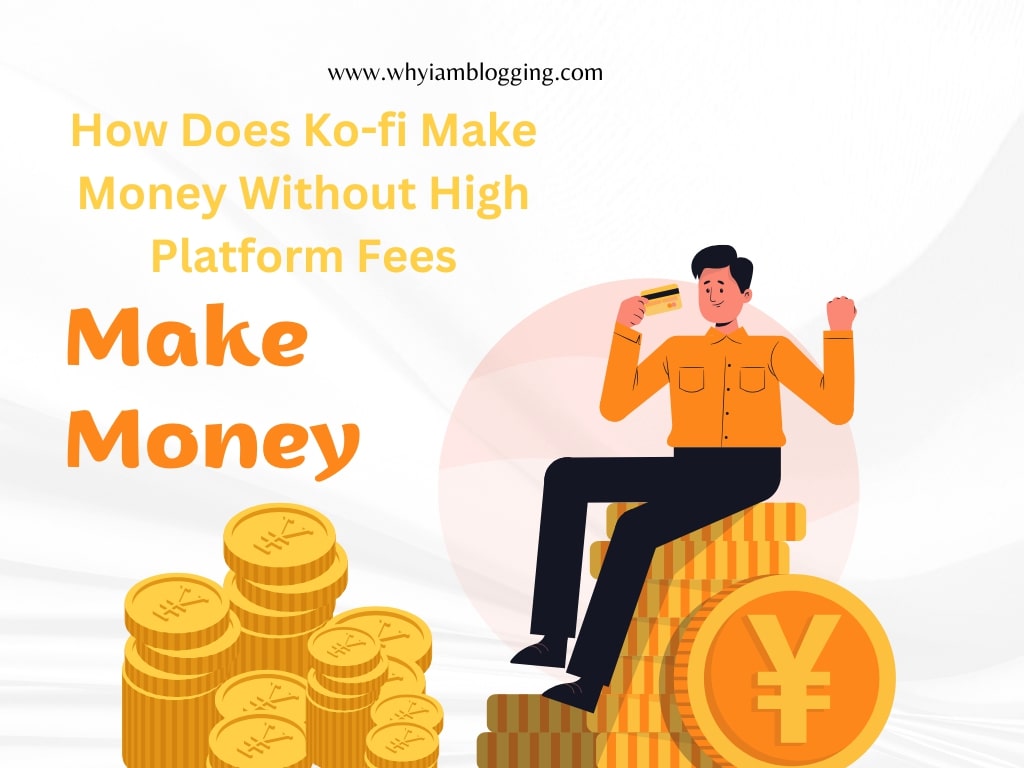Have you ever wondered, how does Ko-fi make money while offering creators a platform with no fees on one-time donations? Ko-fi has gained immense popularity among creators and supporters for its transparent and low-cost approach. Unlike many competitors, it ensures creators keep more of what they earn while still sustaining its operations. In this blog post, we’ll uncover the secrets behind Ko-fi’s revenue model and explain how it continues to thrive without high platform fees.
How Ko-fi Earns Money Without High Platform Fees
Ko-fi has become a popular platform for creators seeking to monetize their work with minimal fees. The platform allows users to receive donations, offer memberships, and sell products, but unlike many other platforms, Ko-fi doesn’t take a significant cut from one-time donations. Instead, Ko-fi has designed a revenue model that benefits both creators and the platform, focusing on transparency and sustainability. In this article, we’ll explain exactly how Ko-fi makes money and why it’s a game-changer for creators.
What is Ko-fi and How Does it Work?
Ko-fi is a platform designed to help creators earn money through donations, memberships, and sales of their products or services. It’s commonly used by artists, writers, content creators, and influencers who want to receive support from their fans without dealing with complex fee structures. The platform’s name, “Ko-fi,” originates from the concept of “buying a coffee” for creators, symbolizing small contributions of support.
Ko-fi offers a free version for creators, where fans can donate in increments (like buying a coffee), but the platform also offers a premium version for those who want more features and benefits.
How Ko-fi Makes Money Without High Platform Fees
While Ko-fi offers creators the ability to receive donations without taking a significant cut, the platform still has a few revenue sources that allow it to sustain itself. Here’s a breakdown of how Ko-fi makes money:
1. Ko-fi Gold: The Premium Membership
Ko-fi Gold is the main revenue stream for the platform. For $6 per month (or $59 annually), creators get access to additional features that enhance their experience. These features include:
- Custom branding: Creators can personalize their page to better reflect their brand.
- Advanced analytics: Track how your supporters are engaging with your content.
- Unlimited posts: Share unlimited content without restrictions.
- No platform fees on shop sales and memberships: Ko-fi Gold users can sell products and offer memberships without the platform taking a cut.
Ko-fi Gold is an optional upgrade, but it’s a popular choice for creators who want more control over their page and additional tools to grow their income. This membership fee is a core way that Ko-fi earns revenue while offering creators more freedom.
2. Transaction Fees for Non-Gold Members
For creators who choose not to upgrade to Ko-fi Gold, the platform charges a small transaction fee on shop sales and membership subscriptions. This fee is generally 5%, which is relatively low compared to other platforms like Patreon, which can charge 10% or more.
This fee applies only to sales of products (like digital downloads, merchandise, etc.) and monthly memberships. Donations from fans via the “buy me a coffee” feature remain fee-free for all users, allowing creators to keep more of their earnings.
3. Voluntary Contributions from Supporters
Ko-fi is unique in that it allows fans and supporters to contribute directly to the platform. This voluntary contribution, which can be made by clicking a “Support Ko-fi” button, helps the platform maintain its services and grow. These contributions are not required from creators or users, but they do help sustain the platform in a way that doesn’t burden creators with additional costs.
4. Payment Processing Fees
Ko-fi does not take a cut from one-time donations, but payment processors like PayPal and Stripe charge a fee for every transaction. Ko-fi earns a small amount through these partnerships, though the bulk of the fees go to the payment processors themselves. While Ko-fi doesn’t profit directly from these fees, they are an essential part of how money is exchanged on the platform.
5. Commission and Shop Features for Creators
Creators can set up custom shops on Ko-fi where they can sell digital products like e-books, courses, artwork, or physical items like merchandise. Ko-fi provides these tools free of charge for Gold members, but non-Gold members are charged a small fee for each sale.
Creators can also accept commission requests through Ko-fi, providing another income stream. These features allow Ko-fi to generate revenue while giving creators flexible ways to earn money, whether they’re selling products, offering services, or receiving tips.
Why Ko-fi’s Revenue Model is Beneficial for Creators
Ko-fi’s revenue model is designed to be fair to creators while ensuring the platform remains sustainable. By offering low fees, no mandatory charges on donations, and optional premium memberships, Ko-fi makes it easier for creators to earn an income without the burden of high platform fees.
This model allows creators to retain more of their earnings, which is a significant advantage over other platforms that charge high commissions. Ko-fi’s creator-first approach has made it a popular choice for anyone looking to monetize their work with minimal barriers to entry.
Conclusion: How Ko-fi Makes Money
So, how does Ko-fi make money? By offering a mix of premium memberships (Ko-fi Gold), small transaction fees on sales and memberships for non-Gold users, voluntary contributions, and partnerships with payment processors. This balanced approach allows the platform to thrive while keeping its services affordable for creators.

